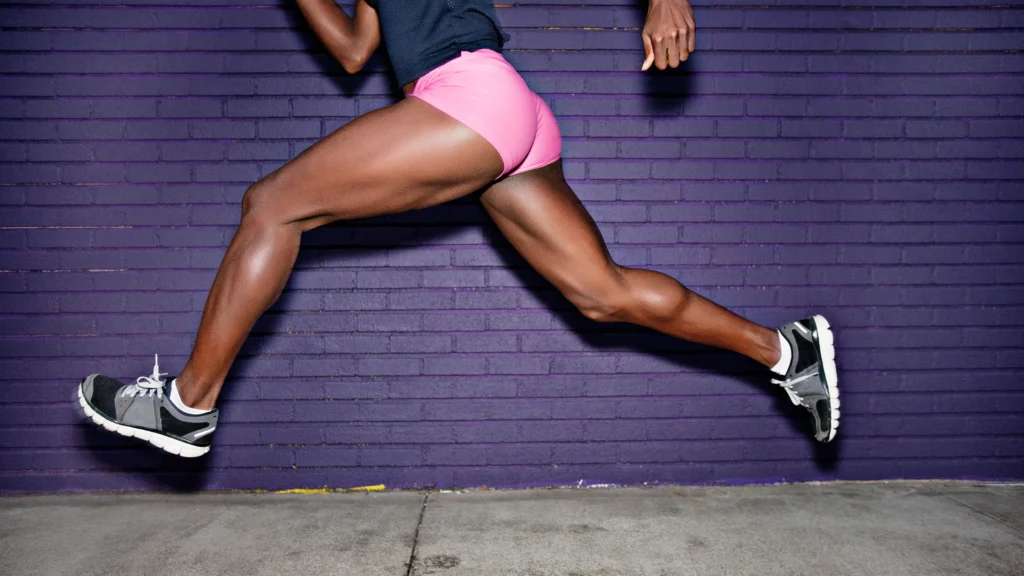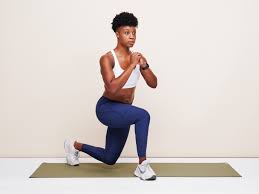When building a strong and well-balanced lower body, the hamstrings play a crucial role that often goes overlooked. These muscles, located at the back of your thighs, contribute to overall leg strength and support activities like running, jumping, and squatting. A strong group of hamstrings can enhance athletic performance, improve stability, and reduce the risk of injury, making incorporating targeted exercises into your fitness routine essential.
In this blog, we will explore the top five hamstring exercises that can help you strengthen your legs and unlock your full potential. Whether you’re an athlete aiming to enhance your performance or a fitness enthusiast looking to elevate your workouts, these effective exercises will empower you to build powerful legs while promoting balance and coordination. Get ready to transform your lower body and discover the secrets to a more robust hamstring foundation.
Understanding the Importance of Hamstrings in Lower Body Strength
The hamstrings, a group of three muscles located at the back of the thigh, play a crucial role in lower body strength and overall athletic performance. These muscles are responsible for bending the knee and extending the hip, making them essential for activities such as running, jumping, and squatting. A strong hamstring group not only contributes to explosive movements but also helps stabilize the pelvis and lower back, thus reducing the risk of injuries.
Neglecting hamstring development can lead to muscular imbalances, which often result in lower body weakness and an increased susceptibility to strains and tears. Furthermore, strong hamstrings are vital for maintaining proper posture and alignment during dynamic movements, enhancing overall efficiency and power output in various sports and fitness activities.
Incorporating targeted hamstring exercises into your workout routine not only boosts leg strength but also improves your performance, whether you’re an athlete or a fitness enthusiast. By focusing on these essential muscles, you can enhance your speed, agility, and endurance, ultimately unlocking your true potential in lower body performance. Prioritize hamstring training to build a balanced, powerful lower body and enjoy the benefits of improved athleticism and reduced injury risk.
Key Takeaway: Strong hamstrings are vital for maintaining lower body strength, improving athletic performance, and preventing injuries. Incorporate dedicated hamstring exercises into your fitness regimen today.
Exercise 1: Deadlifts – The Ultimate Hamstring Builder
Deadlifts are widely regarded as one of the most effective exercises for building hamstring strength and overall lower body power. This compound lift primarily targets the hamstrings, glutes, and lower back, making it a fundamental movement for anyone looking to enhance their athletic performance or improve fitness levels.

How Deadlifts Work the Hamstrings
When executed correctly, deadlifts engage the hamstrings as they work to extend the hips and stabilize the pelvis during the lifting phase. The movement begins with a hip hinge, allowing the hamstrings to stretch and recruit muscle fibres efficiently. As you lift the weight from the ground, your hamstrings contract to guide the movement, effectively building strength and endurance.
Types of Deadlifts
Several variations of deadlifts specifically enhance hamstring activation, including traditional deadlifts, Romanian deadlifts, and single-leg deadlifts. Each variation emphasizes different aspects of muscle engagement, enabling you to tailor your workout to target the hamstrings effectively.
Proper Form for Optimal Results
To maximize the benefits of deadlifts while minimizing injury risk, focus on maintaining proper form. Keep your feet shoulder-width apart, grip the barbell just outside your knees, and maintain a neutral spine throughout the movement. Engage your core and drive through your heels to lift the weight, ensuring your hips and shoulders rise simultaneously.
Incorporating Deadlifts into Your Routine
Aim to include deadlifts in your strength training program 1-2 times per week. Start with lighter weights to master the form before gradually increasing the load. Consider pairing deadlifts with other lower body exercises, such as squats or lunges, to create a comprehensive workout that targets the entire posterior chain.
Deadlifts are not only the ultimate hamstring builder but also a powerhouse exercise for overall strength development. By incorporating deadlifts into your fitness routine, you’ll enhance your leg strength, improve your athletic performance, and protect yourself from injuries. Embrace the power of deadlifts and unlock your potential
Exercise 2: Hamstring Curls – Isolating the Muscle Group
Hamstring curls are a highly effective exercise specifically designed to isolate and strengthen the hamstring muscles, making them an essential component of any comprehensive leg workout. By focusing on this muscle group, hamstring curls improve muscle endurance, stability, and overall athletic performance, while playing a preventive role against injuries.

How Hamstring Curls Work
Hamstring curls can be performed using various equipment such as machines, resistance bands, or even body weight. The primary movement involves flexing the knee, which directly targets the hamstrings. When you perform hamstring curls, the contraction of these muscles helps develop strength and promote muscle growth, particularly useful for athletes requiring explosive power and speed.
Variations of Hamstring Curls
There are multiple variations of hamstring curls to keep your workouts fresh and effective. Machine curls provide stability and allow for controlled movement, while standing or seated band curls offer versatility and can be done anywhere. Additionally, incorporating stability balls or using a cable machine can increase muscular engagement and challenge your balance.
Proper Form for Effective Results
To achieve optimal results and reduce the risk of injury, ensure that you’re using the proper form during hamstring curls. If you’re using a machine, adjust the pad to rest just above your heels and keep your knees aligned with the axis of rotation. Perform the curl movement slowly and with control, fully extending and contracting the knees to maximize hamstring activation.
Incorporating Hamstring Curls into Your Routine
Aim to include hamstring curls in your workout regimen 1-2 times per week. They can be a standalone exercise or incorporated into a superset with other leg exercises like squats or lunges for a well-rounded leg day. For enhanced results, consider varying the weight and repetitions, focusing on higher reps with lighter weights for endurance, or lower reps with heavier weights for strength.
Hamstring curls provide an ideal way to isolate and strengthen the hamstring muscles, ultimately improving lower body strength, stability, and performance. By incorporating hamstring curls into your fitness routine, you’ll not only enhance your overall leg development but also safeguard against injuries. Target those hamstrings effectively and watch your lower body strength soar
Exercise 3: Romanian Deadlifts – Combine Power and Flexibility
The Romanian deadlift (RDL) is a potent exercise that effectively combines power and flexibility, making it a standout choice for developing strength in the hamstrings, glutes, and lower back. Unlike traditional deadlifts, where the weight is lifted from a resting position on the floor, the RDL focuses on the eccentric phase of the lift, emphasizing muscle tension and stretch while enhancing flexibility in the posterior chain.

How Romanian Deadlifts Work
The RDL primarily targets the hamstrings and glutes through a hip hinge movement. By starting with the barbell (or dumbbells) held at thigh level and lowering it while maintaining a slight bend in the knees, you create a deep stretch in the hamstrings. As you lower the weight, tension builds in these muscles, promoting both strength and flexibility. When lifting the weight back up, your hamstrings and glutes power the movement, making the RDL an excellent exercise for overall posterior chain conditioning.
Benefits of Romanian Deadlifts
Incorporating RDLs into your training regimen offers several benefits. They enhance hamstring and glute strength essential for athletic performance, improve hip hinge mechanics which translate to various sports movements, and increase flexibility in the hamstrings. Additionally, the stability required in RDLs also engages the core, providing a full-body workout effect.
Proper Form for Safety and Effectiveness
To perform Romanian deadlifts safely and effectively, start with your feet shoulder-width apart and hold the weight in front of your thighs. Keep your chest up, shoulders back, and spine neutral throughout the movement. Initiate the exercise by hinging at the hips and slightly bending the knees as you lower the weight along your legs. Go down until you feel a moderate stretch in the hamstrings, then engage your glutes to bring the barbell back to the starting position.
Incorporating Romanian Deadlifts into Your Routine
Include Romanian deadlifts in your workout routine 1-2 times per week, either as part of a dedicated leg day or within a total-body workout. Aim for 3-4 sets of 6-12 repetitions, adjusting the weight to maintain good form. You can also combine them with other exercises like squats or lunges to create balanced leg workouts.
Romanian deadlifts are an exceptional way to build power, enhance flexibility, and develop strength in the hamstrings and glutes. By integrating RDLs into your exercise routine, you can not only improve your muscle flexibility but also bolster overall lower body performance and resilience against injury. Embrace the Romanian deadlift to unlock greater strength and flexibility
